Art & Exhibitions
A New Biennial Takes Shape in the Emerging Design Hub of Doha
Design Doha is the latest initiative from Qatar Museums in its bid to transform the city into a global center of art and design.
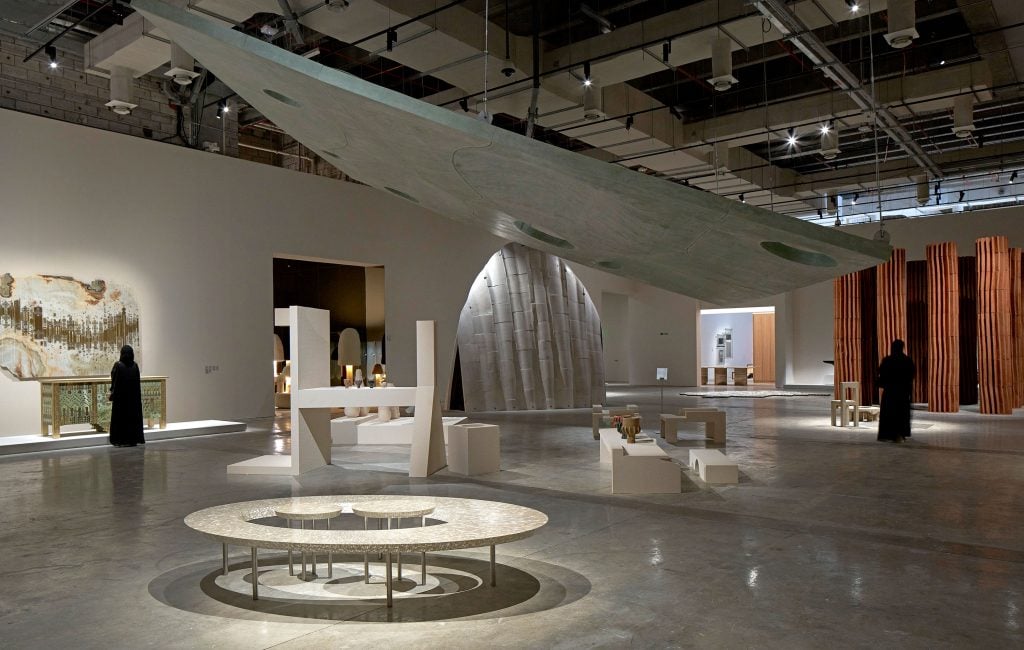
Qatar’s cultural landscape is progressing at a dizzying speed. The office leading the diminutive Gulf country’s cultural development, Qatar Museums, is investing heavily in the effort, allocating billions to erect world-class museums, restore important heritage sites, and stage public art installations, many of them in far-flung patches of the desert. Barely the size of Jamaica, Qatar has opened no fewer than five major museums in the last 15 years, as well as numerous stadiums—as many as eight—in advance of the World Cup in 2022, the first Arab nation to host the international sporting event.
A new biennial, Design Doha, is the latest arrow in Qatar Museums’ quiver and the brainchild of its chairperson, Sheikha Al Mayassa bint Hamad bin Khalifa Al Thani, who’s emerged in the last decade as the driving force behind the country’s entree into the art arena. Design Doha continues her bid to transform the capital city into a global center of art and design.
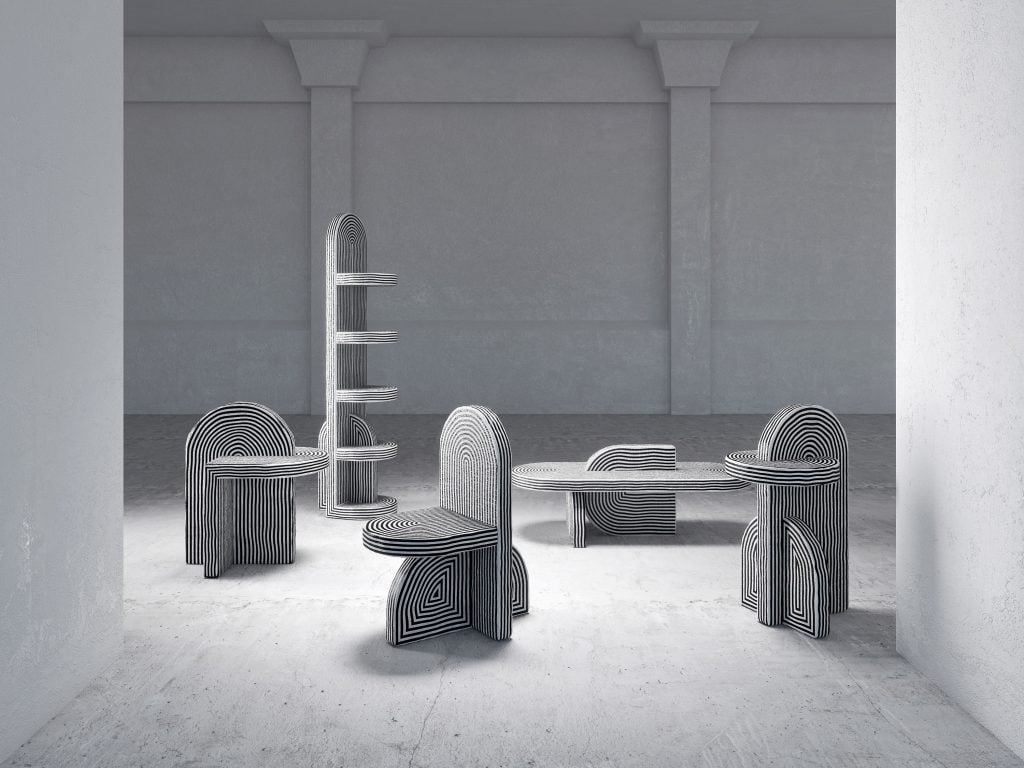
Richard Yasmine’s After Ago Collection, a tribute to Beirut’s architectural history.
This year, its inaugural edition, Design Doha featured over 100 designers from across the Middle East and North African (MENA), working in a range of disciplines, from architecture, urbanism, and landscape design to graphic design, textiles, woodwork, glass, and ceramics. The platform’s artistic director Glenn Adamson, an art and design historian based in New York, said he was taken with the “explosive energy and creativity” of the region’s design scene. “As a newcomer, I didn’t appreciate just how much talent there was,” he continued, “and it’s been inspiring to see the energy and commitment that participants brought to the event.”
The central showcase, “Arab Design Now” (through August 5), is said to be the first museum-level survey of contemporary Arab design, consisting of 74 works by MENA designers spread across several floors of M7, a creative hive in the modern, bustling neighborhood of Msheireb. The exhibition, curated by Rana Beiruti (founder of Amman Design Week in Jordan), reflects how “the Arab world is a diverse place,” she said, “full of people from different walks of life and cultures. I wanted to celebrate that and show that Arab design is not disconnected from the global condition of design. Arab designers face and respond to the same challenges for our collective future.”
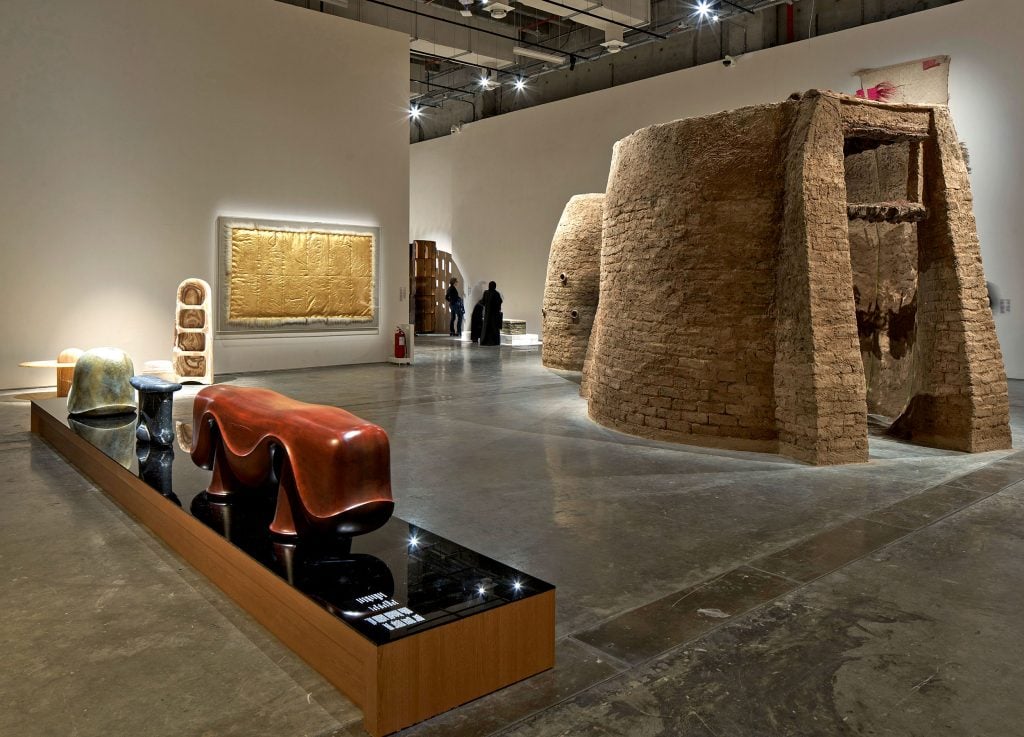
Installation view of “Arab Design Now” with Salima Naji’s clay dwellings on the right. © Edmund Sumner. Courtesy of Qatar Museums.
“I also wanted to highlight,” she added, “the importance of looking at craft as an extension of the land, and the way designers in the Arab world respond to the unique geography of the region with innovation in material and attentiveness to sustainability.”
In one work, Sharing the Earth (Spatial Interiorities) (2023), architect Salima Naji mined her decades of research into vernacular building in Morocco, constructing a two-part cylindrical dwelling out of clay, straw, wool, and palm trunks, with traditional oculi at the top to allow for air flow. In another work, Tiamat (2023), designer AAU ANASTAS created a structure in self-supporting stone, its undulating shape informed by computational analysis of sand dunes as well as the Gothic-inspired pointed arches found across Palestine, Syria, and Lebanon.
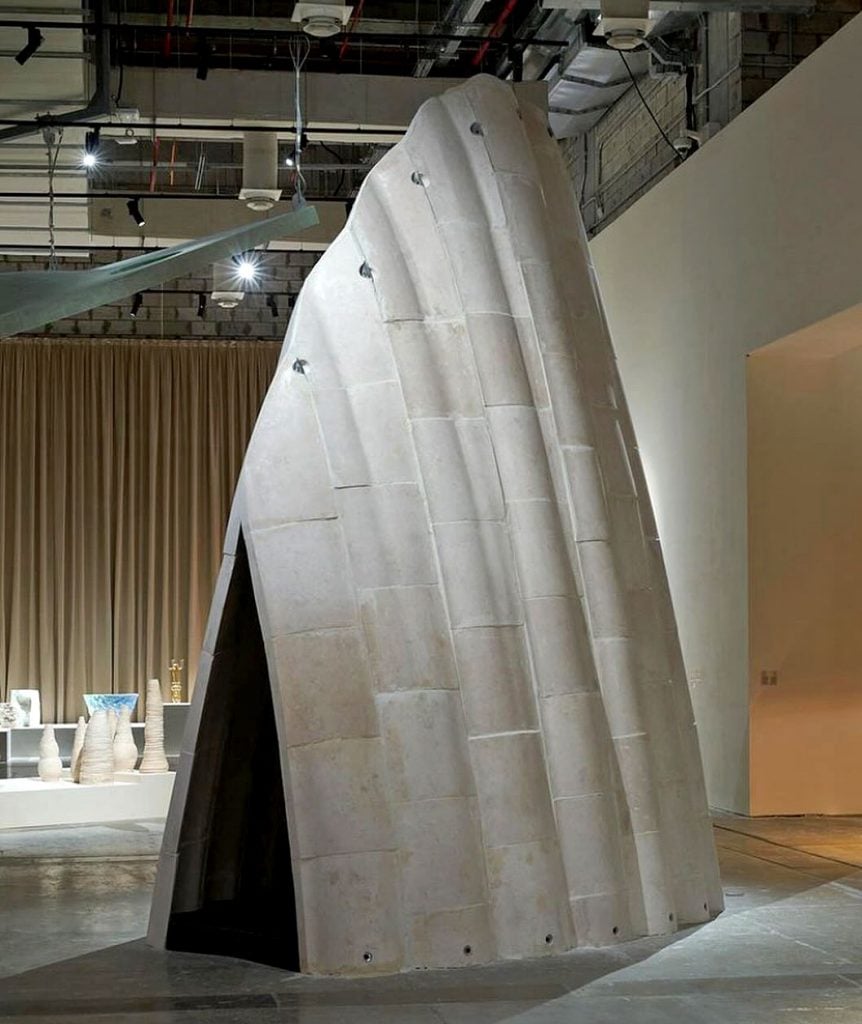
AAU ANASTAS, Tiamat (2023). © Edmund Sumner. Courtesy of Qatar Museums.
Most designers struck a balance between traditional craft sensibilities and contemporary aesthetics. “This is clearly a region that is currently enjoying the best of both worlds,” said Adamson. “Like Japan, Italy and Scandinavia in the 1950s and 1960s—geographies that reshaped global design at the time—you have a basis of continuous artisanship combined with newly emerging experimental practice.”
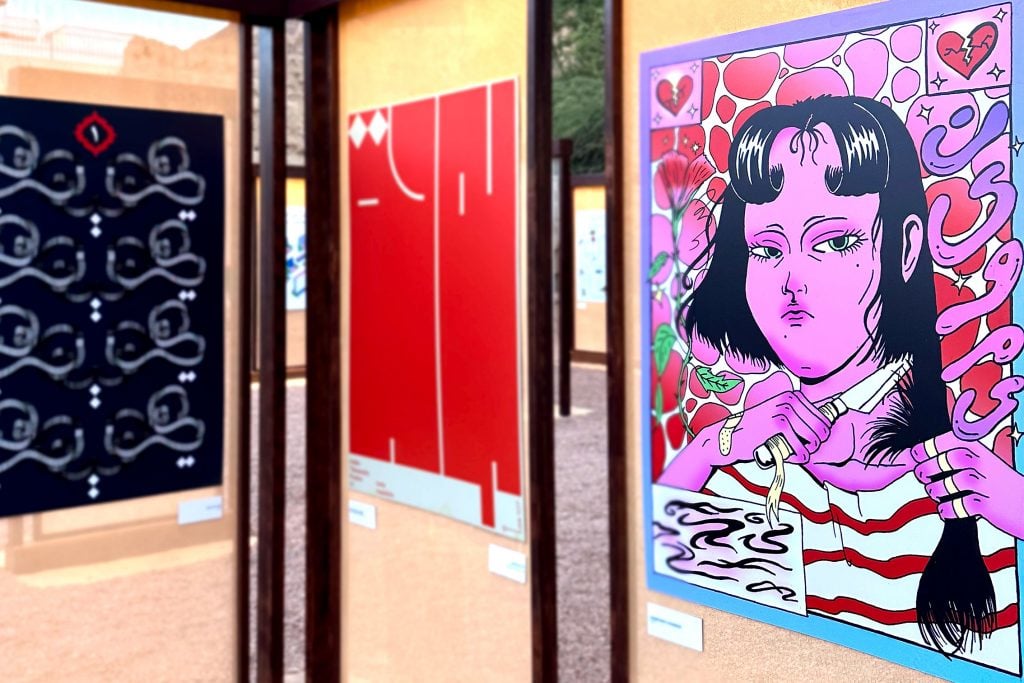
Installation view of “100 Arabic Posters.” © Jochen Braun. Courtesy of Qatar Museums.
Elsewhere in M7, an exhibition of 100 posters presented the vibrancy of graphic design in the region while another looked back on a century of architecture in Doha, tracing the history of the city’s built environment through a variety of styles such as Arabic Deco, Doha Classicism, and Qatar’s take on Brutalism. Upstairs in a dimly lit, contemplative space, “Weaving Poems” showcased the talent of Afghan-born, Amman-based designer Maryam Omar, who created a series of abstract carpets inspired by the poetry and oral heritage of women weavers in Afghanistan.
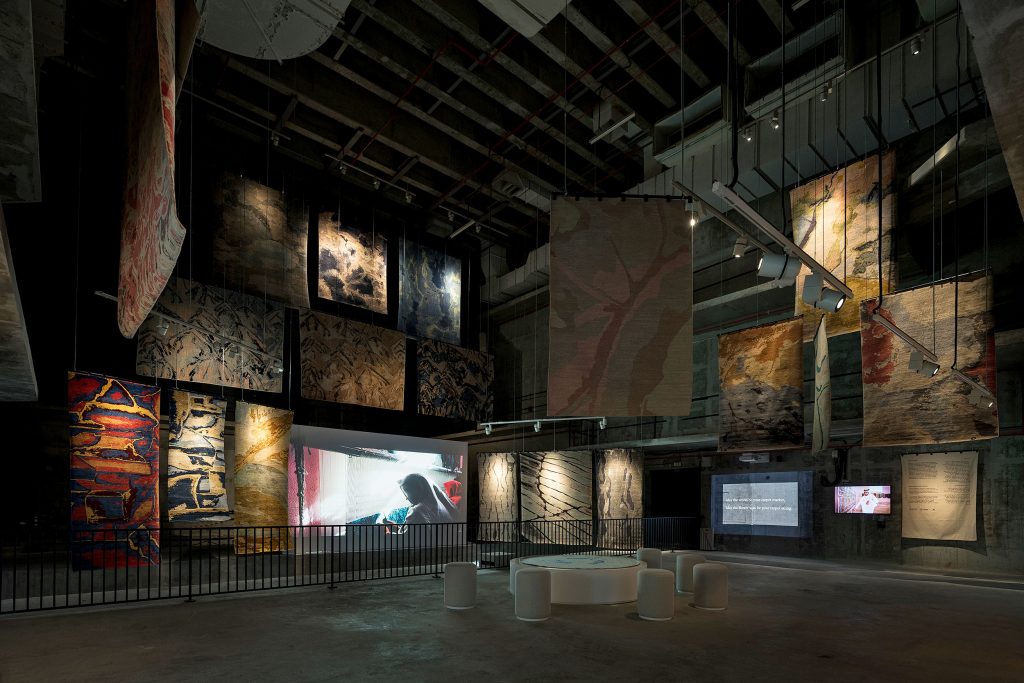
Installation view of “Weaving Poems.” © Julián Velásquez. Courtesy of Qatar Museums.
Another highlight is Moroccan artist Amine al Gotaibi’s work Desert installed at the Ned. “The combination of his soulful work in copper and wool with David Chipperfield’s sublime reimagination of an existing building (the former Ministry of the Interior) is just perfection,” said Adamson.
No cultural excursion to Doha would be complete without outings to the I.M. Pei-designed Museum of Islamic Art, an instant landmark when it launched in 2008; the National Library, created by Rem Koolhaas/OMA (who’s also designing the Qatar Auto Museum, to be completed later this year), estimated to house a million rare books and manuscripts in a single sunlit space; and the striking new National Museum, designed by the French architect Jean Nouvel to resemble massive discs of “desert rose” crystal formations, the kind that occur naturally in the Arabian Desert.

The National Museum of Qatar, designed by Jean Nouvel. Photo: Lee Carter.
Two more major museums are planned before the decade is out. Opening in 2029, the Lusail Museum—designed by the Swiss architecture firm Herzog & de Meuron—will hold one of the world’s most extensive collections of art, much of it from Qatar Museums’ holdings. And, in 2030, the Art Mill Museum will open, housed in a historic flour mill and designed by the Pritzker Prize-winning Chilean architect Alejandro Aravena.
Then there’s Richard Serra’s East-West/West-East (2014) near the village of Zekreet on the western shore of the peninsula (about an hour’s drive from Doha on the east coast). Its four monumental Cor-Ten plates jut out of the sand like relics of a future civilization, in keeping with the cryptic austerity of the surrounding terrain.
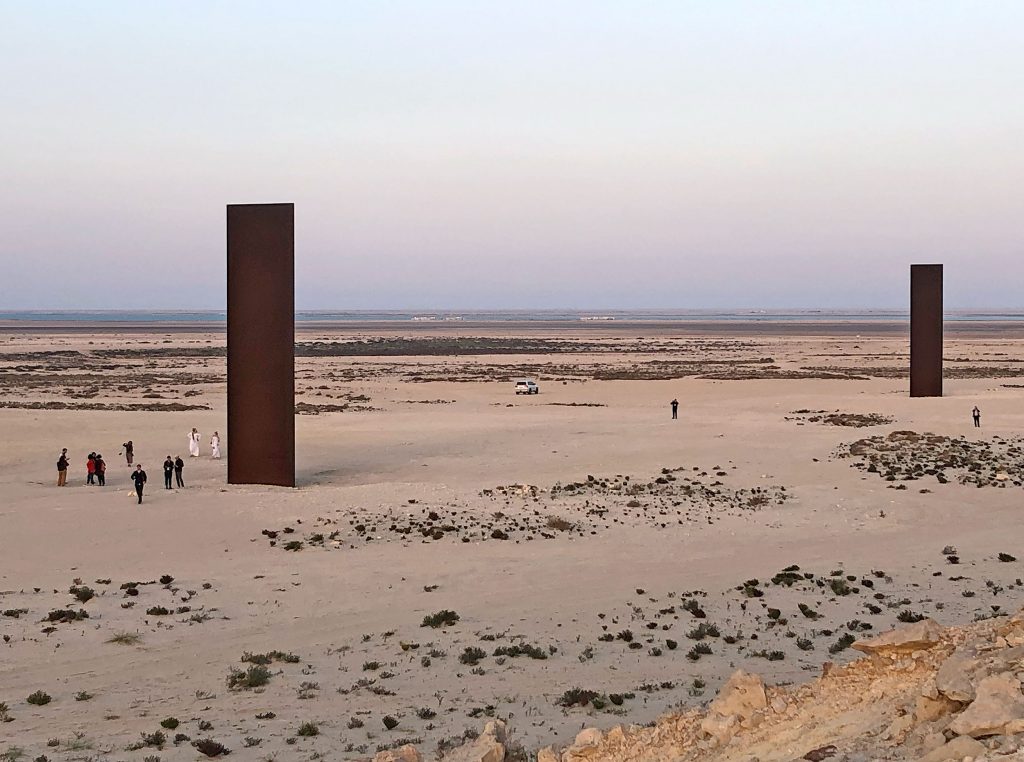
Richard Serra, East-West/West-East (2014). Photo: Lee Carter.
There’s no denying these are exhilarating times for Qatar’s art and design scene, bolstered by the royal family’s largesse and a long history of expert craftsmanship. “Now that we have this success behind us and people know what Design Doha is,” reflected Adamson, “I think it will be possible to do something still more ambitious… I think the Arab region is now positioned to assume not just a more active, but in fact a leadership role in the global design conversation.”





